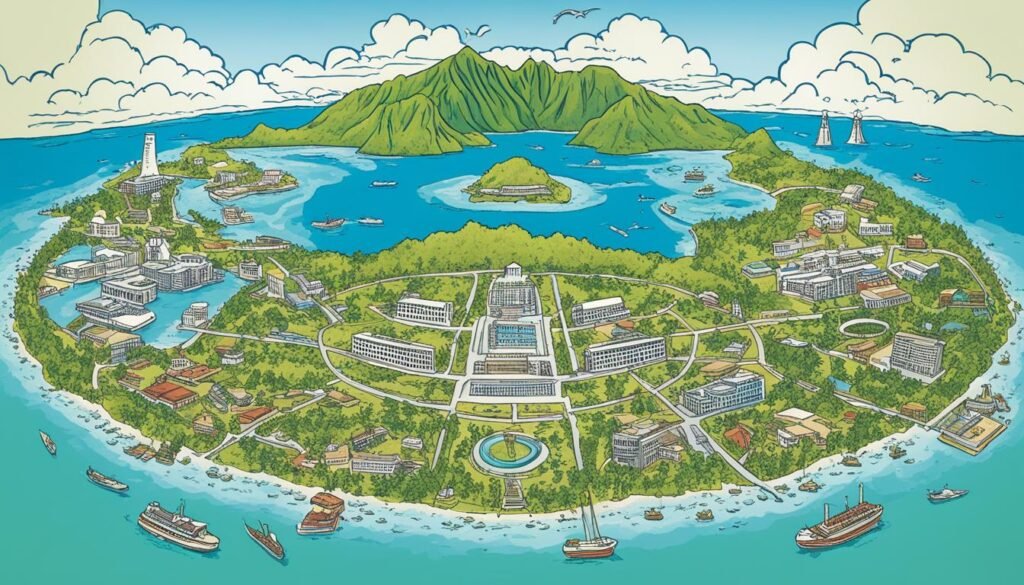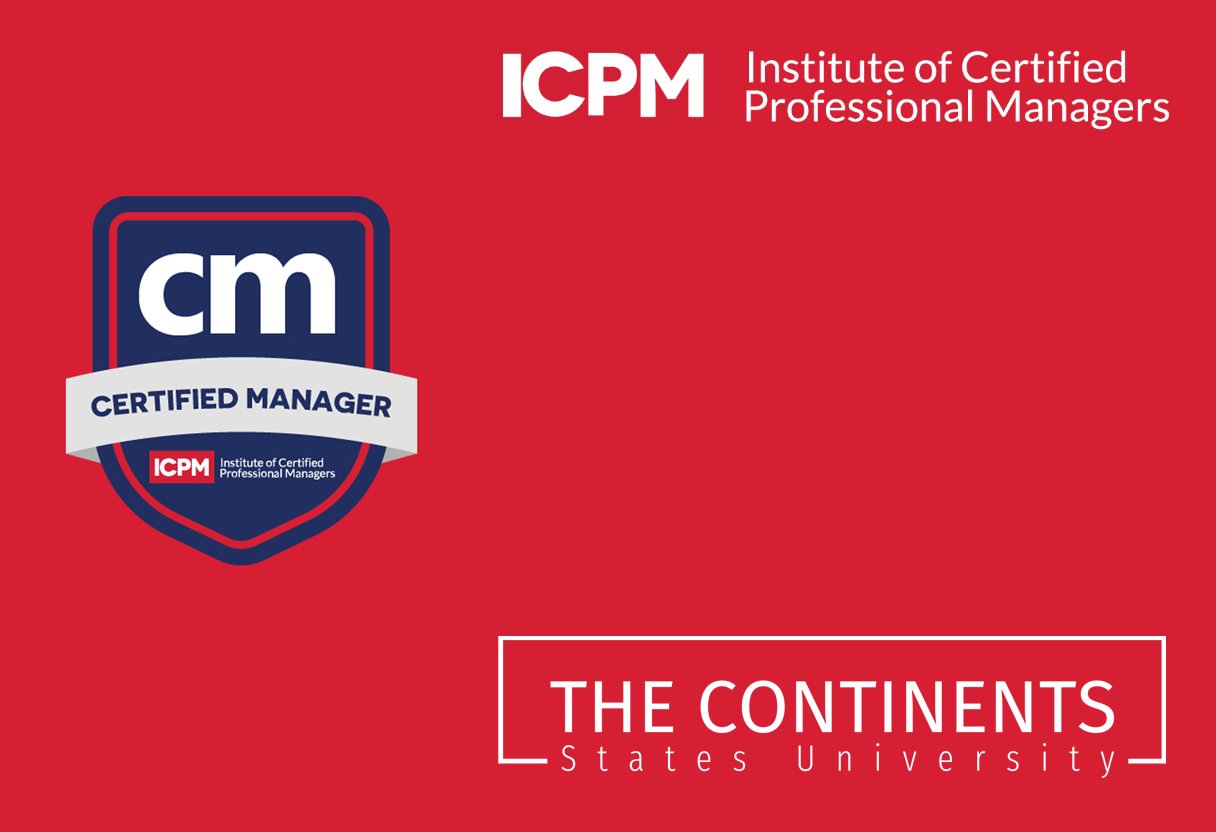Did you know that the tiny island nation of the Federated States of Micronesia (FSM) has been a key player in Pacific regional diplomacy and governance? With a population of just over 104,000 people spread across 607 islands, this sovereign state in free association with the United States has carved out a remarkable niche for itself on the global stage.
The capital city of Palikir, located on the island of Pohnpei, serves as the political and administrative heart of the FSM. From this strategic outpost in the vast Pacific Ocean, the Micronesian leaders have navigated complex regional dynamics, championed the interests of small island nations, and forged influential partnerships that belie their small size.
Key Takeaways
- The Federated States of Micronesia (FSM) is a sovereign, self-governing state in free association with the United States, consisting of four states – Yap, Chuuk, Pohnpei, and Kosrae.
- The capital city of Palikir, located on the island of Pohnpei, serves as the political and administrative center of the FSM.
- Despite its small population and land area, the FSM has carved out a significant role in Pacific regional diplomacy and governance.
- The FSM has leveraged its strategic location and unique political status to champion the interests of small island nations on the global stage.
- The Micronesian leaders have forged influential partnerships and played a key role in regional organizations and initiatives.
Introduction to the Federated States of Micronesia
Tucked away in the western Pacific Ocean, the Federated States of Micronesia (FSM) is a captivating archipelago of islands that stretch across the Oceanic Geography. This island nation, part of the vast Pacific Island Chains, comprises the Micronesian Archipelago, including the Caroline Islands and other Insular Territories. With a rich Micronesian History, the FSM is home to diverse Indigenous Cultures that have been influenced by Colonial Influences and the Trust Territory of the Pacific.
Geographic Location and Island States
Situated northeast of Indonesia and Papua New Guinea, the FSM encompasses four distinct island states: Yap, Chuuk, Pohnpei, and Kosrae. Spanning a longitudinal distance of almost 2,700 km, these islands are scattered across the western Pacific, just north of the equator. Despite its relatively small land area, the FSM boasts an expansive exclusive economic zone covering nearly 3 million km2, making it the 14th-largest EEZ in the world.
History and Background
The ancestors of the Micronesians have inhabited these islands for over 4,000 years, developing a decentralized chieftain-based system that eventually evolved into a more centralized economic and religious culture centered on Yap Island. The region was later explored by European navigators in the 16th century, with the Spanish and Germans establishing control over the Caroline Islands in the 19th century. Following World War I, Japan was granted a League of Nations mandate to administer the islands, which it held until the end of World War II. The United States then administered the islands as part of the Trust Territory of the Pacific Islands until the FSM gained its independence in 1986 under a Compact of Free Association with the U.S.
Governance and Political Structure
The Federated States of Micronesia (FSM) is governed by a robust constitutional framework that establishes a unique non-partisan democratic system with a clear separation of powers. The 1979 constitution serves as the foundation for the Micronesian government, modeling a congressional system similar to that of the United States.
Constitutional Government and Separation of Powers
The FSM Congress is a unicameral legislative body, comprising 14 members – four state-based senators and ten district-based senators. This Congress is responsible for electing the President and Vice President from among the four state-based senators, who then form a cabinet to support their administration. Notably, the Micronesian government operates without formal political parties, maintaining a non-partisan democratic approach.
The clear separation of powers between the legislative, executive, and judicial branches ensures checks and balances within the Micronesian government. This structure promotes transparency, accountability, and the efficient functioning of the Micronesian Congress and its institutions.

Micronesia’s Relationship with the United States
The Federated States of Micronesia (FSM) enjoys a unique relationship with the United States, built on the Compact of Free Association. This agreement grants the FSM sovereignty while establishing the U.S. as responsible for its defense. Under this arrangement, FSM citizens can serve in the U.S. military without obtaining permanent residency or citizenship. Additionally, the Compact provides economic and technical assistance programs to support the island nation.
Compact of Free Association
The Compact of Free Association is the cornerstone of the U.S.-Micronesia relationship, outlining the defense and foreign policy commitments between the two nations. This arrangement has allowed the FSM to maintain its independent sovereignty while benefiting from the U.S. military presence and economic aid. The Compact has been instrumental in fostering close ties between the U.S. and the Federated States of Micronesia.
Defense and Foreign Affairs
Under the Compact, the U.S. assumes full responsibility for the defense of the Federated States of Micronesia. The FSM National Police operate a Maritime Wing Unit, but the country’s overall defense falls under the purview of the United States. In international diplomacy, the FSM has established relations with 56 countries, including the Holy See and the Sovereign Military Order of Malta, and is a member of the United Nations, having joined in 1991.
Micronesia: Pacific Island Leadership Palikir Micronesia
Palikir, the capital of the Federated States of Micronesia, serves as the epicenter of Pacific Island leadership and Micronesian governance. This city, located on the island of Pohnpei, is the seat of the country’s national government, housing the FSM’s Congress, executive branch, and various government agencies. Palikir plays a pivotal role in the administration and decision-making processes that shape the future of this captivating island nation.
As the heart of Micronesian Insular Affairs, Palikir is where critical policies are debated, treaties are negotiated, and strategic initiatives are launched. The city’s government buildings and offices are bustling with activity, as leaders from the four island states of Micronesia convene to address the unique challenges and opportunities facing their Pacific Island community.
Palikir’s role as the Pacific Island Leadership center extends beyond the borders of Micronesia, as the city also serves as a hub for regional cooperation and diplomacy. Representatives from neighboring countries and international organizations frequently visit Palikir to engage in discussions and forge partnerships that advance the shared interests of the Pacific region.
Recent Political Developments
The Federated States of Micronesia (FSM) has witnessed a significant leadership transition in recent times. In July 2023, the United States Secretary of the Interior Deb Haaland visited the FSM to attend the inauguration of the 10th President, H.E. Wesley W. Simina, and the newly constituted 23rd Congress. This event marked a new chapter in Micronesian politics, as the Biden-Harris administration reaffirmed its commitment to the prosperity of the FSM and discussed the ongoing negotiations regarding the extension of economic assistance under the Compact of Free Association.
New Administration and Priorities
The inauguration of President Simina and the 23rd Congress has set the stage for a renewed policy agenda in the Federated States of Micronesia. The new administration is expected to focus on strengthening the nation’s economy, improving infrastructure, and addressing the pressing challenges posed by climate change. As Micronesian politics continue to evolve, the leadership transition presents an opportunity for the country to chart a course towards a more sustainable and resilient future.

Economic Landscape and Challenges
The Federated States of Micronesia (FSM) faces significant economic hurdles as a small island developing state. The nation’s economy heavily relies on assistance from the United States through the Compact of Free Association, which accounts for a substantial portion of its gross domestic product (GDP). Key economic sectors in Micronesia include fishing, agriculture, and tourism, yet the country grapples with high unemployment, limited infrastructure, and a narrow economic base – hallmarks of many insular economies.
Despite these development challenges, the Biden administration has proposed extending economic aid to the FSM beyond 2023, a move currently being considered by the U.S. Congress. This potential continuation of Compact assistance could provide a crucial lifeline for the Micronesian economy, helping to address its structural vulnerabilities and support long-term sustainable growth.
Diversifying the Micronesian Economy and reducing its reliance on external aid will be crucial in the years ahead. Fostering new industries, such as renewable energy and ecotourism, could help unlock fresh economic opportunities and create much-needed jobs for the country’s population. However, the path forward will require strategic investments, policy reforms, and collaboration with international partners to overcome the unique challenges facing this remote Pacific island nation.
Environmental and Climate Change Concerns
The Federated States of Micronesia (FSM) faces significant environmental and climate change challenges. As a nation of low-lying islands and atolls, the country is highly vulnerable to the impacts of rising sea levels, coastal erosion, and extreme weather events. The effects of climate change pose a serious threat to the fragile oceanic ecosystems and sustainable development in the region.
Coastal Development and Resilience
Coastal development is a critical concern for the FSM, as many communities and infrastructure are located along the shoreline. The U.S. government has provided technical assistance and grant funding to support the country’s efforts to address these challenges and build climate resilience. Projects have focused on managing the UNESCO World Heritage site of Nan Madol, which is threatened by the effects of climate change and coastal erosion.
The FSM is actively exploring sustainable development strategies to mitigate the impacts of coastal management challenges and strengthen the resilience of its oceanic ecosystems. These efforts are crucial for the country’s long-term prosperity and the well-being of its people in the face of the ever-increasing climate change impacts.
Cultural Heritage and Preservation
The Federated States of Micronesia is home to a remarkable testament to the region’s rich cultural heritage – the Nan Madol archaeological site. This series of small artificial islands, linked by a network of canals, was once the ceremonial and political seat of the Saudeleur dynasty that united the island of Pohnpei.
In 2016, Nan Madol was inscribed as a UNESCO World Heritage Site, recognizing its immense historical and cultural significance. The Micronesian culture is deeply intertwined with this impressive Oceanic archaeology site, which serves as a window into the region’s past and the ingenuity of its people.
Preserving a Micronesian Treasure
Preserving the Nan Madol site has been a priority for the Federated States of Micronesia, with the U.S. government providing technical assistance and funding to support the country’s efforts. Through historic preservation initiatives, the FSM is working to meet the management requirements and conduct essential conservation and restoration work at this culturally significant UNESCO heritage site.
The preservation of Nan Madol is not only crucial for the Micronesian people but also for the global community to appreciate and learn from this extraordinary example of Oceanic architecture and cultural legacy. As the Federated States of Micronesia continues to safeguard this unique heritage, it serves as a testament to the region’s unwavering commitment to honoring its past and shaping its future.
Regional Cooperation and Diplomacy
The Federated States of Micronesia (FSM) has long been an active participant in Pacific Regionalism, engaging with various multilateral organizations to advance its interests and promote regional stability. One of the key forums for this cooperation has been the Pacific Islands Forum, a prominent Pacific Regionalism body that brings together independent and self-governing Pacific island countries.
However, in a significant diplomatic move in 2021, the FSM, along with the Marshall Islands, Kiribati, and Nauru, formally withdrew from the Pacific Islands Forum following a dispute over the election of the Forum’s Secretary-General. Despite this withdrawal, the FSM continues to prioritize Micronesian Diplomacy and remains committed to Multilateral Cooperation within the Pacific region.
Engagement with Pacific Organizations
Alongside its withdrawal from the Pacific Islands Forum, the FSM has sought to strengthen its engagement with other regional organizations, such as the Pacific Community (SPC). This regional body, based in Noumea, New Caledonia, focuses on a wide range of development and environmental issues that are crucial for Pacific island nations, including the FSM. The FSM’s active participation in the SPC and other International Partnerships demonstrates its continued commitment to regional cooperation and diplomacy.

In addition to its multilateral engagements, the FSM has also been proactive in developing bilateral cooperation and development partnerships with various countries, including Singapore and France. These International Partnerships have allowed the FSM to diversify its diplomatic and economic ties, further enhancing its role as a Pacific Island Leader.
Education and Human Resource Development
The Federated States of Micronesia has recognized education and human resource development as essential priorities for the country’s future. The government has sought assistance from international partners, like Singapore, to design and review vocational education curricula, aiming to build a skilled workforce crucial for the nation’s long-term economic and social development.
Investing in Micronesian Education and human capital is a key focus for the FSM leadership. The Vice President has met with Micronesian students studying in Vanuatu, encouraging them to return and contribute to the Capacity Building process. By nurturing Vocational Training and Developing Human Capital, the nation seeks to bolster its workforce and foster sustainable progress.
Recognizing the importance of Capacity Building, the government has collaborated with regional and global partners to strengthen its education system. This strategic approach aims to equip the Micronesian population with the necessary skills and knowledge to drive the country’s economic and social transformation, positioning the FSM for a prosperous future.
Future Prospects and Outlook
As the Federated States of Micronesia grapples with the challenges ahead, its leadership remains committed to the nation’s development. The ongoing Compact Negotiations with the United States, which provide economic assistance, will be crucial in shaping Micronesia’s future. Adapting to the impacts of climate change, such as coastal erosion and rising sea levels, is also a top priority for Micronesian Development.
To diversify its narrow economic base, Micronesia is exploring opportunities for Economic Diversification. This includes expanding tourism, strengthening agriculture, and exploring renewable energy sources. The country’s regional cooperation and diplomatic efforts, such as engagement with Pacific Organizations, may also open new avenues for Micronesian Development.
Despite the hurdles, the Federated States of Micronesia’s commitment to good governance, sustainable practices, and human resource development provides a solid foundation for a prosperous future. The Biden administration’s support and engagement will be crucial in shaping Micronesia’s trajectory in the years to come.

Conclusion
The Federated States of Micronesia, with its capital in Palikir, represents a unique model of Pacific Island leadership and governance. As a sovereign state in free association with the United States, the FSM has navigated a complex political and economic landscape, while also grappling with the challenges of climate change and environmental preservation.
Micronesia’s rich cultural heritage, regional diplomacy, and focus on human resource development suggest that the country is poised to play an increasingly important role in the Pacific region in the years to come. The country’s insular governance and its evolving relationship with the United States will continue to shape its path forward, as it strives to balance the priorities of economic development, environmental sustainability, and cultural preservation.
Despite the ongoing challenges faced by the Federated States of Micronesia, the country’s resilience and commitment to Pacific Island leadership are evident. As Micronesia continues to navigate the complexities of the 21st century, its unique model of governance and its ability to forge partnerships within the region will be crucial in shaping the future of the Pacific Islands.
Source Links
- Secretary Haaland Wraps Weeklong Pacific Islands Visit, Leads Delegation to Inauguration of the President of the Federated States of Micronesia | U.S. Department of the Interior – https://www.doi.gov/pressreleases/secretary-haaland-wraps-weeklong-pacific-islands-visit-leads-delegation-inauguration
- Federated States of Micronesia – https://en.wikipedia.org/wiki/Federated_States_of_Micronesia
- Vice President Aren B. Palik Heads Delegation of the Federated States of Micronesia to the Thematic Session of the 12th Conference of Leaders (C12) of the Pacific Community – FSM Embassy – https://fsmembassy.fm/vice-president-aren-b-palik-heads-delegation-of-the-federated-states-of-micronesia-to-the-thematic-session-of-the-12th-conference-of-leaders-c12-of-the-pacific-community/


